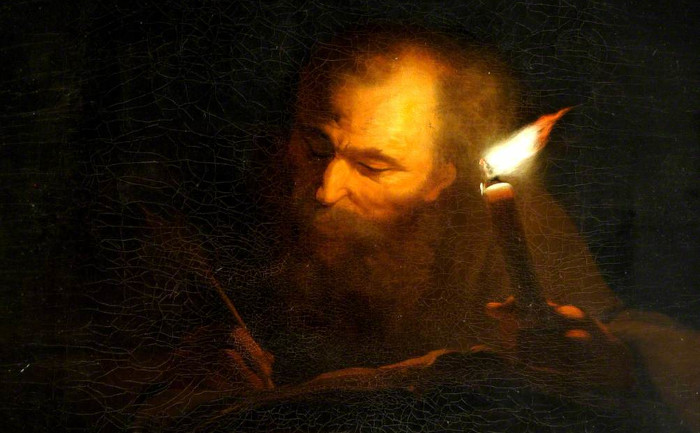
Modern lighting is so ubiquitous that we scarcely think about it, but from prehistory to A.D. 1782 there were just a few primitive means to banish the dark, chiefly fires, rushlights, and tallow candles. And even these were rather precious — in the 17th century John Aubrey wrote of William Oughtred that “his wife was a penurious woman and would not allow him to burne candle after supper, by which means many a good notion is lost.” In 1763 James Boswell was midway through a night of writing when disaster struck:
About two o’clock in the morning I inadvertently snuffed out my candle, and as my fire before that was long before black and cold, I was in a great dilemma how to proceed. Downstairs did I softly and silently step to the kitchen. But, alas, there was as little fire there as upon the icy mountains of Greenland. With a tinder box is a light struck every morning to kindle the fire, which is put out at night. But this tinder box I could not see, nor knew where to find. I was now filled with gloomy ideas of the terrors of the night. I was also apprehensive that my landlord who always keeps a pair of loaded pistols by him, might fire at me as a thief.
What did he do? “I went up to my room, sat quietly until I heard the watchman calling ‘past three o’clock’. I then called to him to knock at the door of the house where I lodged. He did so, and I opened to him and got my candle re-lumed without danger. Thus was I relieved and continued busy until eight the next day.”
(William T. O’Dea, The Social History of Lighting, 1958.)
